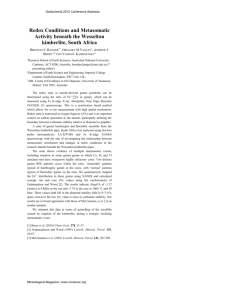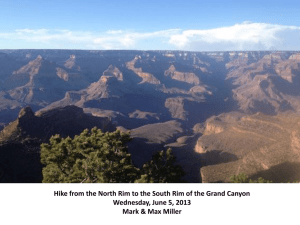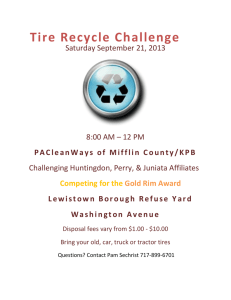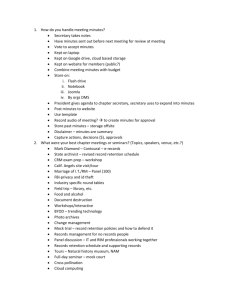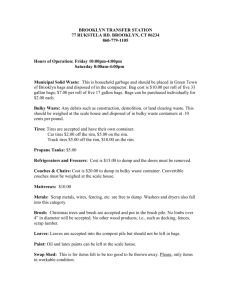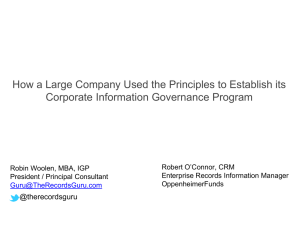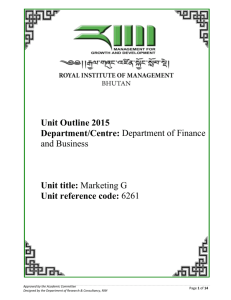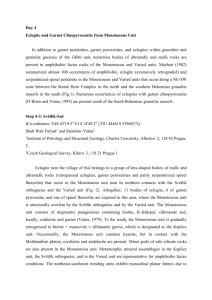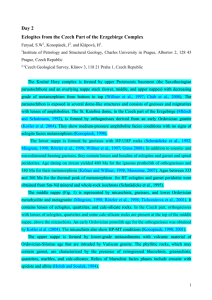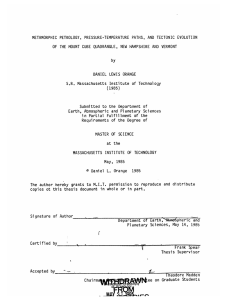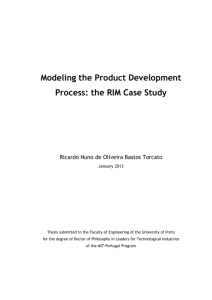Keller_Lukas_Talk - SWISS GEOSCIENCE MEETINGs
advertisement
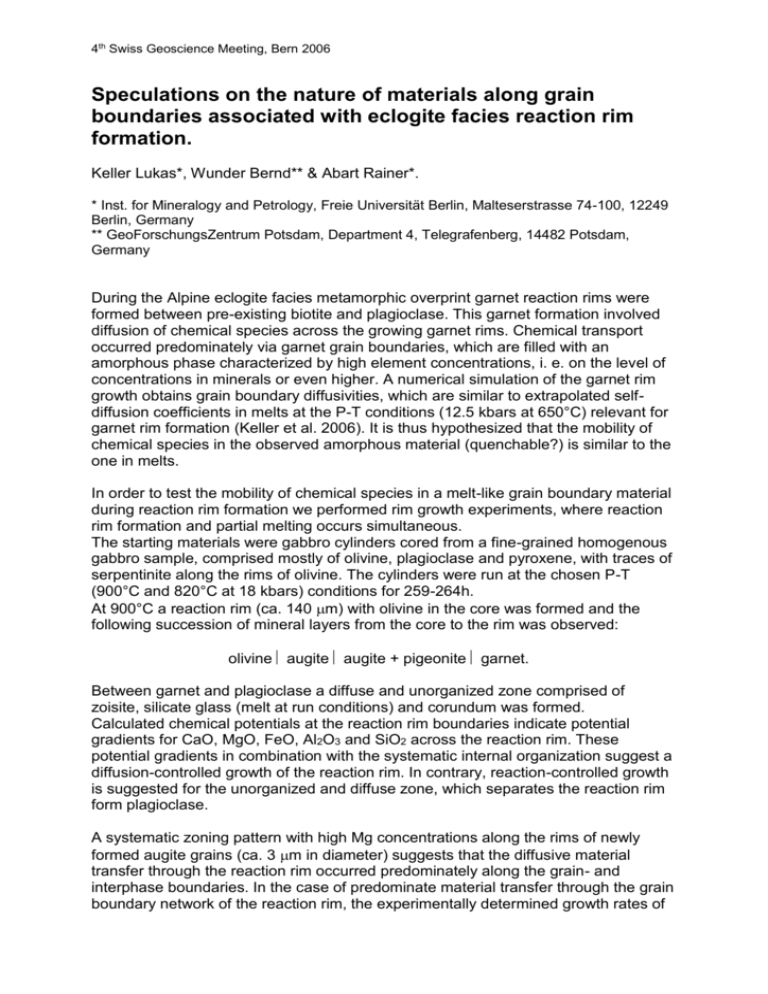
4th Swiss Geoscience Meeting, Bern 2006 Speculations on the nature of materials along grain boundaries associated with eclogite facies reaction rim formation. Keller Lukas*, Wunder Bernd** & Abart Rainer*. * Inst. for Mineralogy and Petrology, Freie Universität Berlin, Malteserstrasse 74-100, 12249 Berlin, Germany ** GeoForschungsZentrum Potsdam, Department 4, Telegrafenberg, 14482 Potsdam, Germany During the Alpine eclogite facies metamorphic overprint garnet reaction rims were formed between pre-existing biotite and plagioclase. This garnet formation involved diffusion of chemical species across the growing garnet rims. Chemical transport occurred predominately via garnet grain boundaries, which are filled with an amorphous phase characterized by high element concentrations, i. e. on the level of concentrations in minerals or even higher. A numerical simulation of the garnet rim growth obtains grain boundary diffusivities, which are similar to extrapolated selfdiffusion coefficients in melts at the P-T conditions (12.5 kbars at 650°C) relevant for garnet rim formation (Keller et al. 2006). It is thus hypothesized that the mobility of chemical species in the observed amorphous material (quenchable?) is similar to the one in melts. In order to test the mobility of chemical species in a melt-like grain boundary material during reaction rim formation we performed rim growth experiments, where reaction rim formation and partial melting occurs simultaneous. The starting materials were gabbro cylinders cored from a fine-grained homogenous gabbro sample, comprised mostly of olivine, plagioclase and pyroxene, with traces of serpentinite along the rims of olivine. The cylinders were run at the chosen P-T (900°C and 820°C at 18 kbars) conditions for 259-264h. At 900°C a reaction rim (ca. 140 m) with olivine in the core was formed and the following succession of mineral layers from the core to the rim was observed: olivine augite augite + pigeonite garnet. Between garnet and plagioclase a diffuse and unorganized zone comprised of zoisite, silicate glass (melt at run conditions) and corundum was formed. Calculated chemical potentials at the reaction rim boundaries indicate potential gradients for CaO, MgO, FeO, Al2O3 and SiO2 across the reaction rim. These potential gradients in combination with the systematic internal organization suggest a diffusion-controlled growth of the reaction rim. In contrary, reaction-controlled growth is suggested for the unorganized and diffuse zone, which separates the reaction rim form plagioclase. A systematic zoning pattern with high Mg concentrations along the rims of newly formed augite grains (ca. 3 m in diameter) suggests that the diffusive material transfer through the reaction rim occurred predominately along the grain- and interphase boundaries. In the case of predominate material transfer through the grain boundary network of the reaction rim, the experimentally determined growth rates of 4th Swiss Geoscience Meeting, Bern 2006 individual layers of the reaction rim allow for an approximation of the grain boundary diffusion rates. Preliminary results suggest (i) CaO diffusion is rate-limiting and (ii) grain boundary diffusivities, which are similar to the one of melts. REFERENCES Keller, L. M., Abart, R., Wirth, R., Schmid, D. W., and Kunze, K. (2006). Enhanced mass transfer through short-circuit diffusion: Growth of garnet reaction rims at eclogite facies conditions. American Mineralogist, 91, 1024-1038.
